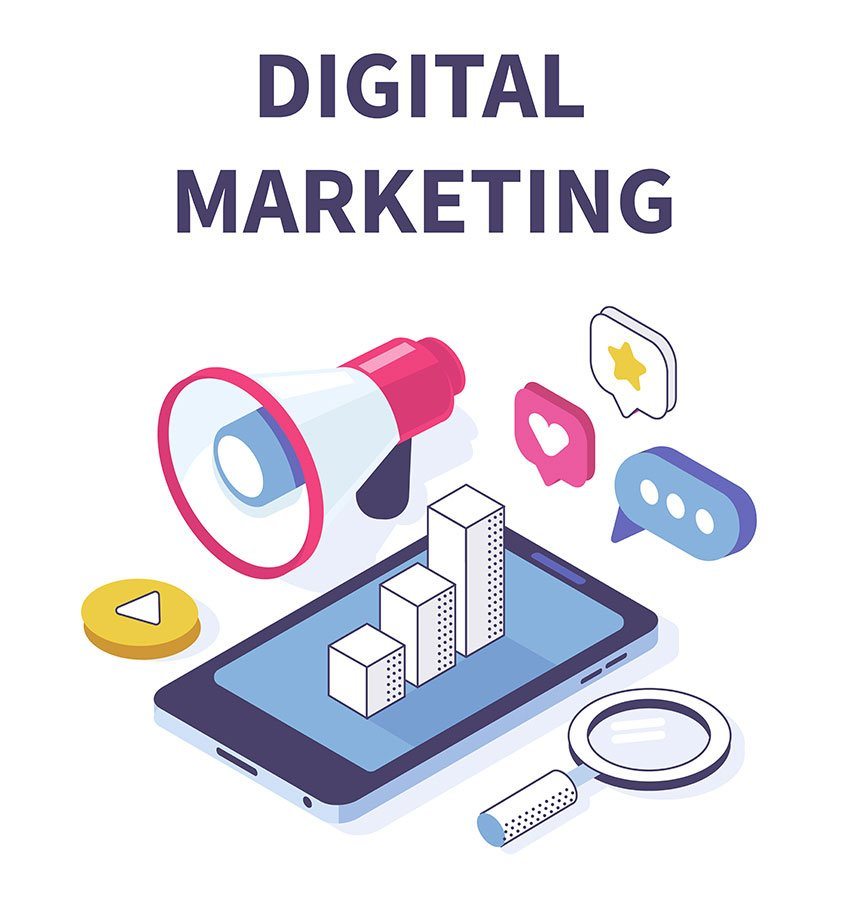
Introduction
A robust digital presence has become the need of every modern business. Whether it is a simple website or a complex website-social media-push marketing combination. With digital marketing becoming an increasingly sophisticated and expensive endeavor. Let us understand the B’s of Marketing. It can be confusing to a business owner how best to ensure their Digital Marketing journey is on the right track. We decided to create a quick guide on the five most important ideas to remember when starting, managing, and streamlining your web-based marketing journey. Refer to these easy-to-remember metrics, and you can’t go wrong!
The 5 B’s
Digital Marketing is meant to create awareness about your business, attract the right customers, and help them through their buyer journeys till the purchase. Beyond the basics, when done right, Digital Marketing achieves:
The right messaging to the right audience
High results via a lead generation
A strong online reputation
An easy way to track these three critical factors is with an acronym called “The five B’s of Marketing”. The five B’s are B2B Marketing, B2C Marketing, Benchmarking, Backlinks, and Bounce Rate.
B2B vs. B2C Marketing

Who is your target audience? There are many differences between the buying behavior and types of goods/services targeted towards individuals compared to companies. Business to business deals tends to be driven by hard, factual data, track record, and ROI. Therefore, B2B selling depends a lot on building relationships to create long-term benefits. Focus on turning every B2B client into a repeat customer. This means looking at every aspect of your web presence- from the messaging you put out, to the ease of use and security of your online purchasing platform, to the quality of your customer support via your online channel.
On the other hand, every B2C buy- whether the product itself is functional (like a screwdriver) or purely emotional (like chocolate) has a strong emotional component to it. Things like strong and plentiful customer reviews, endearing messaging, and an attractive website are all important marketing tools, but remember to enable quick transactions- the easier and faster the better.
Benchmarking
Benchmarking is the process of evaluating the full spectrum of ongoing digital marketing activities to measure “effectiveness,” i.e. how well the initiatives are delivering against pre-defined goals. Broadly speaking, digital marketing falls into five main categories, namely:
SEM or Search Engine Marketing (Including SEO and PPC)
SMM or Social Media Marketing
Content Marketing
Direct Marketing; and
Affiliate Marketing
This article extensively focuses on Benchmarking websites for SEM, but the same principles definitely apply to SMM.

SEO is meant to attract organic traffic, while PPC is web-based advertisements. Therefore benchmarking means measuring the performance of the website on specific parameters related to organic traffic or advertising success.
Some of the most prominent metrics to track SEO effectiveness are:
Leads Generated.
Keywords for which the website achieves high ranking.
Organic traffic.
Backlinking; and
Bounce Rate
SEO metrics are tracked via web analytics tools, such as Google Analytics, and plenty of other alternatives available in the market.
Measuring PPC is all about tracking the effectiveness of the paid Ad and tracking its ROI. The most popular metrics to measure are:
- CTR, or “Click Through Rate” (indicates ad relevance).
- Quality Score (indicates relevance AND trustworthiness); and
- Impression share (how often the ads are triggered by relevant keywords)
There are plenty of others, but these three are a great place to start.
Backlinks

When people and other websites like the content on a particular website, they refer to it because not doing so can lead to complaints of plagiarism and poor-Quality Scores. Search engines track how many other websites refer to your website, a process called “Backlinking”. The higher the number of backlinks from high-quality websites, the higher the all-important Quality Score. One good way to measure how valuable your backlinks are is to see who is linking to them (the more reputed the website i.e., having greater “Domain Authority,” the better). There are definitely many more metrics that you may want to check out here, but this is a great place to start (we DID say this article was a great starting point!)
Getting good backlinks isn’t easy, but a great way to start is to put only high-quality, original content on your website. If you put in the effort and post a relevant, original survey, an interesting video, or even an original viewpoint through a well-written article, that is a great way to get reputed sources to backlink to you. Again, there are many more tricks and tips to increase your backlinks, but always make great content the cornerstone of your website!
Bounce Rate

The term “Bounce” is used when a visitor to your website leaves it without any further interactivity, like clicking a link to go deeper into the site. A bounce rate is when the total number of bounces is divided by total visits to the site. In general, a low bounce rate is good, but that depends on the nature of the business. Keeping track of bounce rates is a good way to check if the world finds the ads relevant to the website if the right keywords are being used, and whether the website itself is properly designed to get the user to do what you want. Bounce rates are also affected by which channel the visitor came through (e.g., visitors who arrive via a click on a link in a targeted email message are better informed than “exploring” visitors who arrive via an organic search)
Bounce rates can be controlled, first and foremost, by starting with a well-designed layout and good content. If the website is in-sync with your intent, then you can expect prospective customers to already be far down the sales funnel. Making the website ever-closer to your original intent happens iteratively. Paying close attention to which keywords people search to find your website and whether that was your original intention.
Conclusion
The 5 B’s of Marketing are a great way to ensure your website meets the necessary levels of interesting messaging to the right customer base. Ensuring continuous monitoring, and keep an eye on competitors’ Digital Marketing actions using web analytics. However, it can be quite difficult and can take time away from your actual job of running a business! It pays to have a good consultant like Manipal Digital Systems on your side. A Digital Marketing consultant helps clients from scratch through an informed, sharing perspective. For a full consultation on how to plan and execute your digital marketing strategy. Reach out to the folks at Manipal Digital Systems today!



